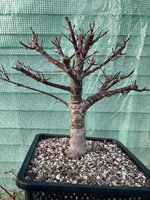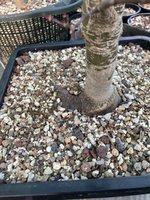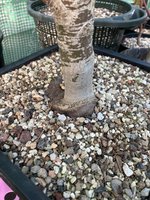DrTolhur
Mame
I have a pretty nice Japanese maple that I like everything above the nebari, but that part leaves much to be desired. Obviously ground layering is an option, but that's a pretty drastic all-or-nothing decision. It's too nice of a tree for me to be comfortable risking a full ground layer to reestablish the roots (I've never tried a ground layer, but I've had pretty pathetic results with air layers), so I was considering manually grafting a new set of roots on above the problem area. I have only ever come across people doing root grafting as a means of adding or filling in roots rather than fully replacing. Is this something anyone has done before? Is it less risky than ground layering?
I'm not as into nebari as most bonsai folks are, so if I can't reset the roots with minimal risk, then I'll just deal with it as is, maybe bury it a tad deeper to hide more of it. Just curious as to others' thoughts on root grafting to reset the roots/nebari.
I'm not as into nebari as most bonsai folks are, so if I can't reset the roots with minimal risk, then I'll just deal with it as is, maybe bury it a tad deeper to hide more of it. Just curious as to others' thoughts on root grafting to reset the roots/nebari.



